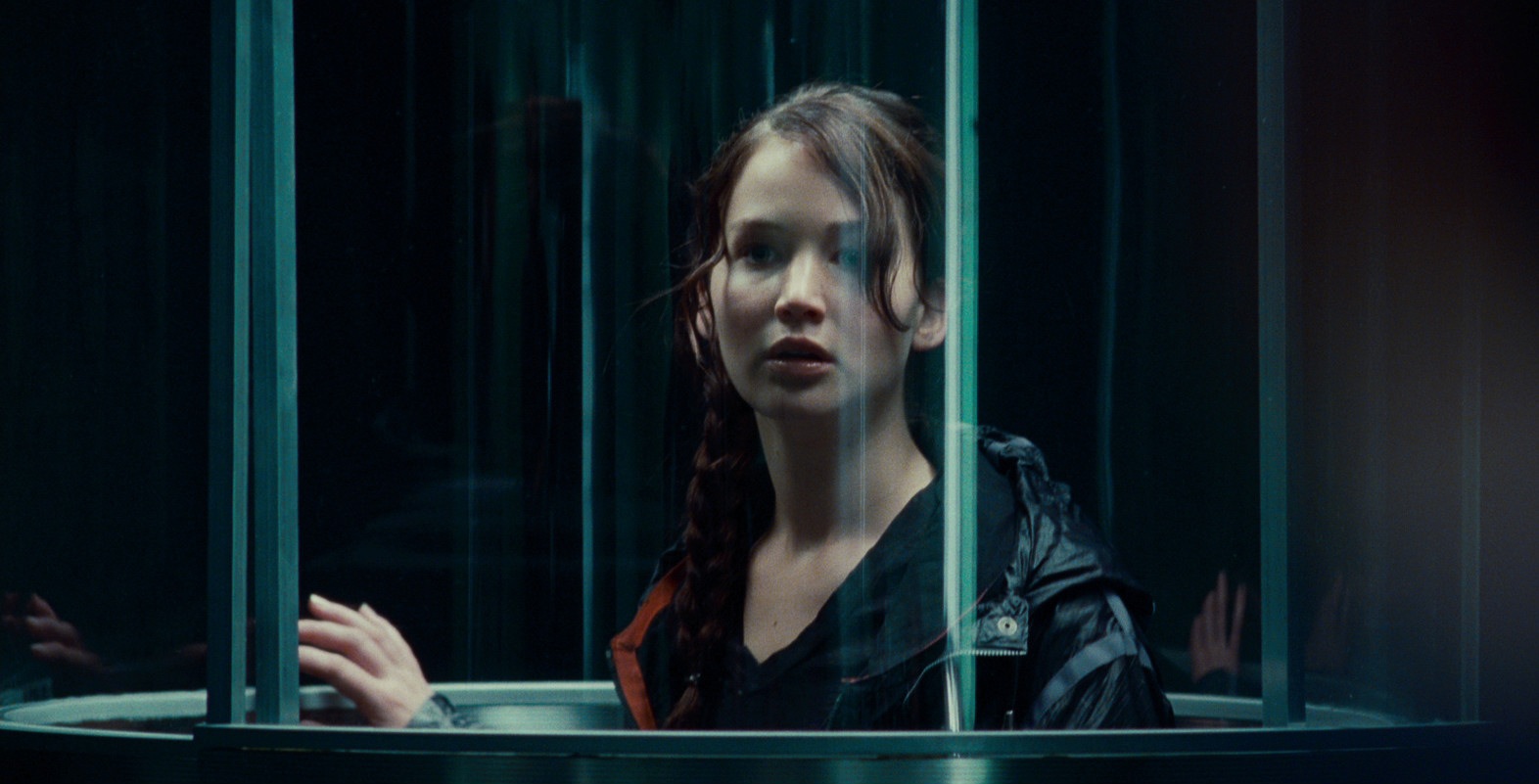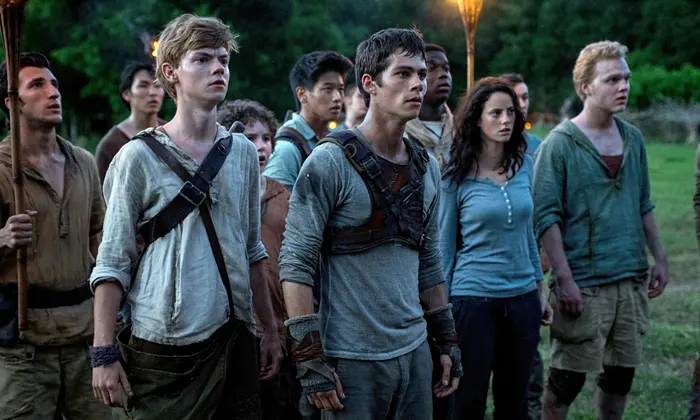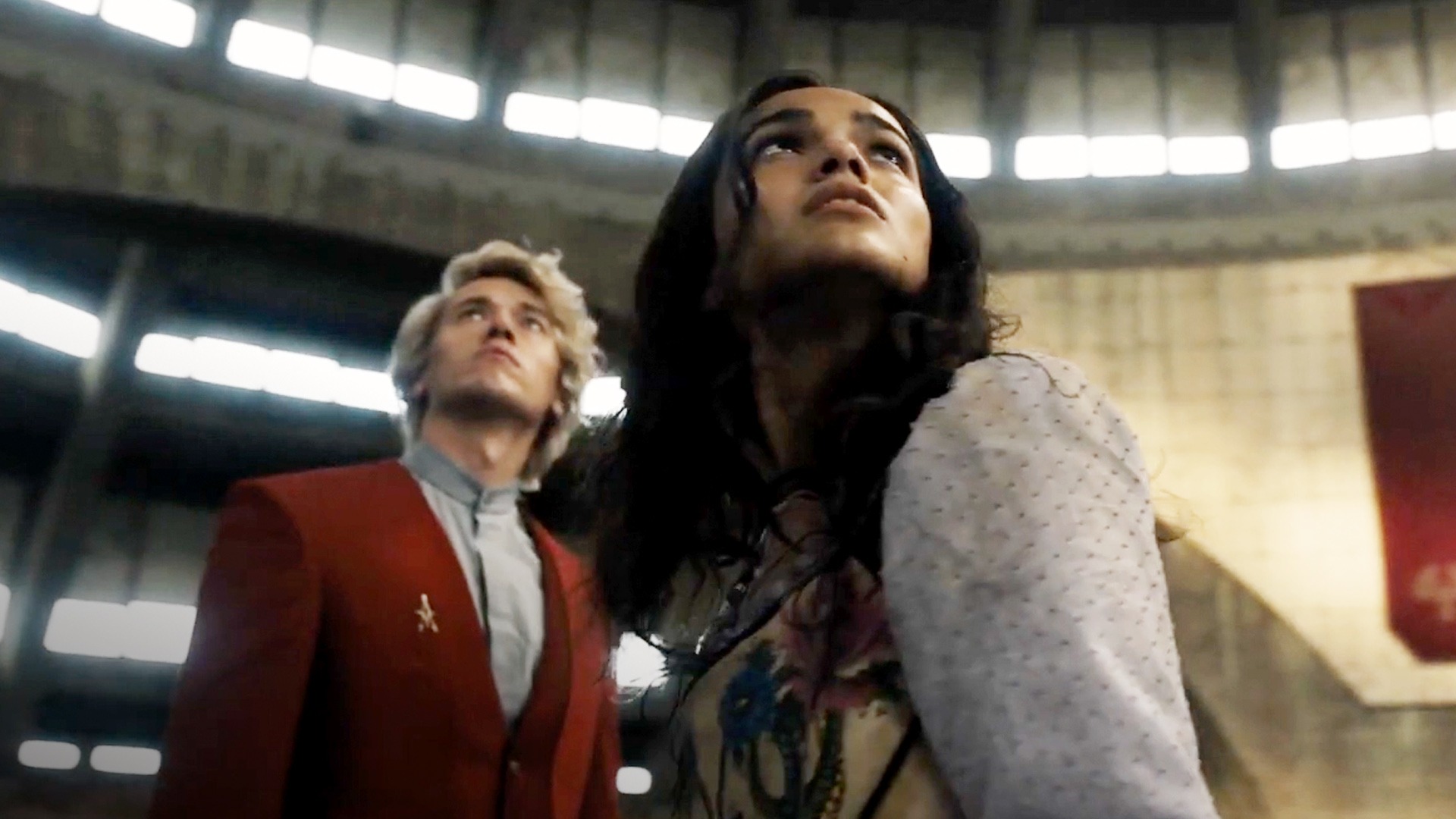Table of Contents Show
In the literary world, genres often rise and fall in popularity, shaped by cultural undercurrents, societal anxieties, and the ever-evolving tastes of readers. Few genres exemplify this ebb and flow as vividly as dystopian fiction, which saw a meteoric rise in the late 2000s, only to fade into the background by the mid-2010s. Dystopian YA series’ once reigned supreme, their bleak futurescapes reflecting our collective fears and feeding our appetite for rebellion.

Yet — the tide eventually turned with the once-omnipresent dystopian narrative receding into the shadows of its own overexposure and formulaic repetition. Now, with the upcoming release of The Hunger Games (2012) prequel film, The Ballad of Songbirds and Snakes (2023) (( “The Hunger Games Prequel Gets Its First Ominous Trailer.” Nerdist.com, 27 April 2023 )), we stand on the precipice of a potential resurgence. But can it truly revive a genre that seemed to burn itself out, or will it merely stir the ashes of a bygone era?
What Is Dystopia?
The dystopian genre’s popularity during this era is, in part, a reflection of the cultural and social anxieties of the time. The global recession, escalating climate change, political instability, and rising income inequality were just a few of the real-world issues feeding into the public consciousness. Dystopian narratives provided a cathartic exploration of these fears, allowing readers to confront and interrogate them within the relatively safe confines of fiction.
A Reflection Of Societal Unease In The Dystopian Boom Era
In the late 2000s to mid-2010s, the young adult (YA) dystopian genre experienced a meteoric rise in popularity, led by a trifecta of powerhouse series: Suzanne Collins’s The Hunger Games (2008) (( “The Hunger Games.” Wikipedia: The Free Encyclopedia, 7 April 2023 )), Veronica Roth’s Divergent (2011) (( “Divergent.” Wikipedia: The Free Encyclopedia, 25 April 2023 )), and James Dashner’s Maze Runner (2009) (( “The Maze Runner.” Wikipedia: The Free Encyclopedia, 19 April 2023 )).

Each of these narratives depicted bleak, post-apocalyptic societies where survival meant navigating oppressive regimes, challenging inhuman experiments, and grappling with life-or-death competitions. But what were the societal catalysts that sparked this surge of dystopian narratives?
A Distorted Mirror Of Reality Within The Allure Of Dystopia
The dystopian genre, by its very nature, offers a distorted mirror of our own reality, exaggerating societal anxieties and presenting a grim alternative future. At the height of its popularity, dystopian fiction served as a platform for exploring real-world issues in a fantastical setting. Consider the global recession in 2008 (( 2008 Recession: What it Was and What Caused It. (2023). Investopedia. )), which had a profound impact on a generation of young readers who grew up amidst financial instability.
The oppressive governments and the stark class divisions depicted in dystopian novels resonated with a generation grappling with economic uncertainty and an increasing disillusionment with authority figures. Similarly, the rise of digital surveillance and the erosion of privacy, hallmarks of many dystopian societies, reflected concerns about the unchecked power of technology.
However, it was not just the themes of these dystopian narratives that resonated with readers. The protagonists — often ordinary individuals thrust into extraordinary circumstances — offered a sense of empowerment. Characters like Katniss Everdeen became symbols of resistance, embodying the idea that one person could stand against the system and initiate change.
Timelines Of Dystopia In History
For instance, these themes can be compared with historical moments such as the rise of totalitarian regimes and social inequality during the Great Depression. Similarly, the rise of digital surveillance and erosion of privacy, hallmarks of many dystopian societies, reflected concerns about the unchecked power of technology, drawing parallels to the advancements of surveillance systems in the Cold War era and beyond.

Climate change, another major issue of the era, was echoed in the post-apocalyptic landscapes of many dystopian worlds. From the scorched Earth of The Maze Runner to the environmental disasters of Divergent, these narratives tapped into growing fears about the future of our planet. Drawing examples from historical environmental disasters, such as the Dust Bowl during the 1930s and current global environmental issues, can help illustrate the resonance between dystopian narratives and growing fears about the future of our planet.
The Over-Saturation & Homogenization That Resulted In The Dystopian Burnout
The immense popularity of The Hunger Games, Divergent, and Maze Runner led to an influx of similar dystopian narratives; publishers, eager to replicate their success, churned out numerous dystopian novels, many of which adhered to a similar formula. A young protagonist, an oppressive regime, a society divided into distinct factions, a life-or-death competition, a brewing rebellion — these tropes became standard fare.
Many new dystopian novels simply recycled the same tropes. This over-saturation of dystopian narratives led to a sense of reader fatigue (( Ahmad, Sabrina. “Dystopian Fatigue.” DhakaTribune.com, 14 July 2018 )). The market was flooded with stories that seemed to merely replicate the formula of their predecessors, rather than innovate.

As a result, many readers began to turn away from the dystopian genre, seeking out fresh narratives in other genres. The dystopian genre, which initially offered a platform for critical discourse about society and politics, seemed to have lost its edge. The focus shifted from thought-provoking societal critiques to more commercial aspects: action-packed plots, romance subplots, and visually spectacular settings that catered more to potential film adaptations than nuanced storytelling.
The subsequent movie adaptations of these series, while initially successful, experienced declining returns, both financially and critically. The last Divergent movie was released straight to TV, signifying a distinct drop in interest and investment in the genre. Unfortunately, The Maze Runner franchise also experienced a decline in audience interest and box office success.
The initial film premiered in September 2014, followed by the release of its sequel, The Maze Runner: Scorch Trials, the following year. The final installment, The Maze Runner: The Death Cure, debuted in 2018, a significant four years after the release of the first film. However, by this time, many viewers had lost interest, resulting in underwhelming box office numbers.
While the first film managed to gross $348.3 million, the third movie only brought in $288.2 million, indicating a decrease in audience engagement (( Clemons, Jemiah. “Rewritten: The Dystopian Downfall.” TheChant.com, 23 June 2023 )).
The Shift To Other Genres During The Dystopian Drought
Because of post-dystopian fatigue, readers and authors turned to other genres; fantasy, spearheaded by authors like Sarah J. Maas and Leigh Bardugo (( Laura137. “Fangirling: Teen Megafan Interviews Leigh Bardugo and Sarah J Maas.” TheGuardian.com, 1 Sept. 2014 )), saw a revival. Contemporary fiction dealing with mental health, identity, and social issues also flourished, highlighting the industry’s shift towards more personal and grounded stories.

For example, fantasy literature generates a substantial revenue of $590.2 million annually in the United States. In 2021, fantasy book sales experienced a remarkable growth of 45.3% compared to the previous year, showcasing the highest increase among all genres except for graphic novels. This surge in popularity highlights the enduring appeal and strong market demand for fantasy books in recent times (( Curcic, Dimitrije. “Fantasy Book Sales Statistics [2023].” WordsRated.com, 2 Oct. 2022 )). But on modern best-sellers lists, dystopian books no longer even top the charts (( “What Are Publishers Looking For In 2023?” TheWritingRoom.com, 10 Aug. 2022 )).
However, the dystopian genre is not dead. Rather, it is in a state of hibernation, awaiting the right moment to re-emerge. And this resurgence could be triggered by The Ballad of Songbirds and Snakes.
The Potential Dystopian Resurgence With The Ballad Of Songbirds And Snakes (2023)?
In 2023, we find ourselves on the cusp of a potential revival of the dystopian genre. The prequel to The Hunger Games, The Ballad of Songbirds and Snakes, is set to release as a film this year. The novel, which centers on a young President Snow, offers a fresh perspective on the familiar dystopian landscape of Panem. It delves into the origins of The Hunger Games, the rise of the authoritarian regime, and the complex character study of a future villain.
By diving deep into the psyche of a character who embodies the oppressive system, rather than focusing on a rebellious hero, The Ballad Of Songbirds And Snakes offers a chance to revitalize the genre’s core strength: its capacity for social commentary. For example, through the portrayal of the main character’s internal struggles and conflicting motivations, the movie sheds light on the complex interplay between power, loyalty, and morality in dystopian worlds.

It offers an opportunity for viewers to reflect on the ethical dilemmas faced by individuals within oppressive systems, emphasizing the importance of individual agency and critical thinking. Moreover, the world has changed significantly since the original Hunger Games series. We’re in the midst of new social, political, and environmental challenges that could breathe fresh life into dystopian narratives.
From the resurgence of authoritarianism in various parts of the world to the impact of the COVID-19 pandemic, these global issues could pave the way for a new wave of dystopian literature that reflects our current realities and anxieties. For instance, the rise of populist regimes and the erosion of democratic values underscore the enduring relevance of dystopian narratives.
Additionally, the COVID-19 pandemic has exposed vulnerabilities in societies globally, amplifying concerns about governmental control, healthcare access, and social inequality. These contemporary global issues provide a fertile ground for a new wave of dystopian literature that reflects our current realities and anxieties.
The Potential Impact Of The Ballad Of Songbirds And Snakes (2023)
However, a potential renaissance of the dystopian genre hinges on more than just timely themes. There is a need for innovation and change within the genre that moves beyond the formulaic tropes that led to its downfall.
The Ballad of Songbirds and Snakes shows promise in this aspect by offering a fresh take on a familiar world. But for the genre to truly thrive again, it will need more narratives that push boundaries, offer unique perspectives, and refuse to shy away from hard-hitting societal critique. The new adaptation has also sparked some skepticism. Many fear that it might be an attempt to capitalize on the nostalgia for the original series, rather than a genuine effort to rejuvenate the genre.

For example, one review of the new addition to The Hunger Games franchise says, “I’ve found that most of these books are cash grabs, assuming fans of a series will buy anything associated with it by default.” (( “Book Review – “The Ballad of Songbirds and Snakes.” Sci-fiFantasyLitChick.com, 1 Nov. 2022 )). The success or failure of The Ballad of Songbirds and Snakes could therefore set the tone for the future of dystopian narratives.
If it merely retreads the same ground without offering anything new, it could reinforce the perception that the genre has run its course. But if it manages to invigorate the genre with fresh perspectives and relevant themes, it could pave the way for a dystopian resurgence.
The Future Of Dystopia With Uncharted Territories & New Voices
For the dystopian genre to truly experience a renaissance, it needs to evolve beyond its past mistakes. It needs to break free from the formulaic tropes that led to its decline and offer diverse perspectives and stories. The Ballad of Songbirds and Snakes offers a promising start by providing a fresh take on the dystopian narrative. But one book, or even one movie, cannot single-handedly revive a genre. It will need a new generation of writers willing to push the boundaries of the genre, offering innovative narratives that engage with our current societal issues in thoughtful and critical ways.

One potential avenue for this evolution lies in the intersection of dystopia with other genres. The blend of dystopian and fantasy elements, for example, could offer a fresh take on both genres.
With The Ballad of Songbirds and Snakes, the future of the dystopian genre remains uncertain yet exciting. Will it manage to reclaim its former glory, or will it fall prey to the same pitfalls that led to its decline? The answer likely lies not only in the success of this film but also in the ability of future dystopian narratives to innovate, diversify, and reflect the anxieties and realities of our current world.
